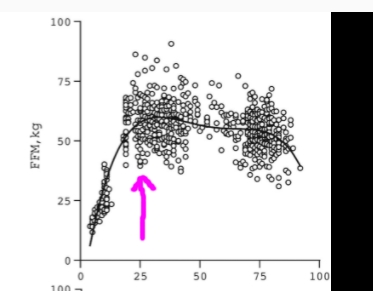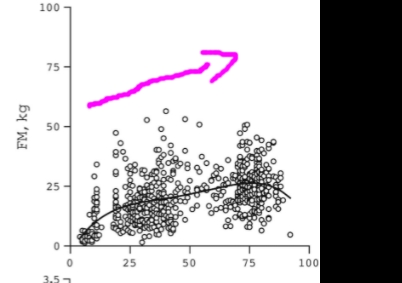Physical activity and fat-free mass during growth and in later life
Klaas R Westerterp, The American Journal of Clinical Nutrition, 03 September 2021
Background
Physical activity may be a way to increase and maintain fat-free mass (FFM) in later life, similar to the prevention of fractures by increasing peak bone mass.
Objectives
A study is presented of the association between FFM and physical activity in relation to age.
Methods
In a cross-sectional study, FFM was analyzed in relation to physical activity in a large participant group as compiled in the International Atomic Energy Agency Doubly Labeled Water database. The database included 2000 participants, age 3–96 y, with measurements of total energy expenditure (TEE) and resting energy expenditure (REE) to allow calculation of physical activity level (PAL = TEE/REE), and calculation of FFM from isotope dilution.
Results
PAL was a main determinant of body composition at all ages. Models with age, fat mass (FM), and PAL explained 76% and 85% of the variation in FFM in females and males < 18 y old, and 32% and 47% of the variation in FFM in females and males ≥ 18 y old, respectively. In participants < 18 y old, mean FM-adjusted FFM was 1.7 kg (95% CI: 0.1, 3.2 kg) and 3.4 kg (95% CI: 1.0, 5.6 kg) higher in a very active participant with PAL = 2.0 than in a sedentary participant with PAL = 1.5, for females and males, respectively. At age 18 y, height and FM–adjusted FFM was 3.6 kg (95% CI: 2.8, 4.4 kg) and 4.4 kg (95% CI: 3.2, 5.7 kg) higher, and at age 80 y 0.7 kg (95% CI: −0.2, 1.7 kg) and 1.0 kg (95% CI: −0.1, 2.1 kg) higher, in a participant with PAL = 2.0 than in a participant with PAL = 1.5, for females and males, respectively.
Conclusions
If these associations are causal, they suggest physical activity is a major determinant of body composition as reflected in peak FFM, and that a physically active lifestyle can only partly protect against loss of FFM in aging adults.















